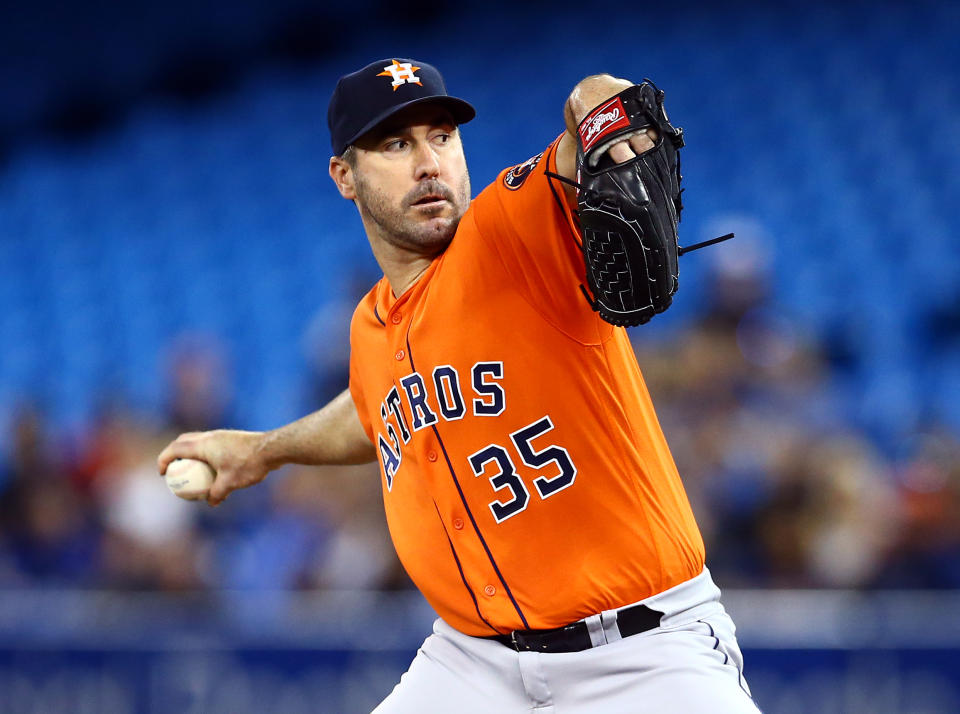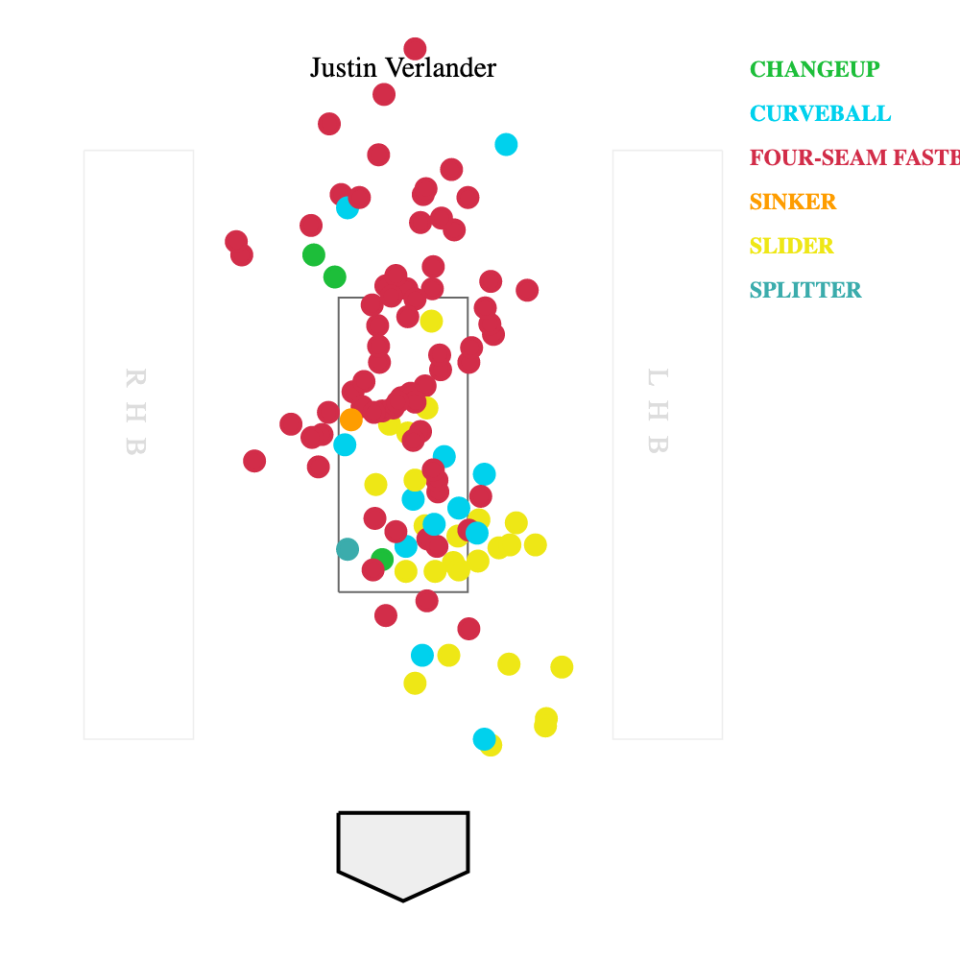Greybeard ace Justin Verlander schools Blue Jays with no-hitter

TORONTO — As Sunday’s game between the Toronto Blue Jays and Houston Astros sped along it began to feel awfully familiar.
While watching a team get blanked by Justin Verlander is as common as it gets, no one but Blue Jays fans have seen the ace come into their building and no-hit their squad. The big right-hander managed that feat May 7, 2011, coming just a walk shy of a perfect game, and he looked like he was going to do it again Sunday. The innings ticked by and zeros just kept finding their way to the scoreboard until the scoreboard ran out of room.
“You start thinking about it third, fourth, fifth inning, then it's definitely on your mind,” he said. “Eighth inning very prevalent. Ninth inning I had memories of blowing a few in the ninth. So I'd be lying if I said I wasn't thinking about that.”
The way the right-hander was cruising, the biggest threat to his historic day appeared to be his team’s inability to score a run. When Canadian third baseman Abraham Toro hit a two-out two-run home run in the top of the ninth off Blue Jays closer Ken Giles it felt inevitable, or as Verlander later put it, “perfectly scripted”.
With three outs remaining Houston’s ace got Brandon Drury to ground out and Reese McGuire to strike out quickly - leaving Bo Bichette as his final challenge.
"Bo's having a great start to his career and he's one of the hottest guys in their lineup,” the starter said. “So he's my least favourite guy to see up there [in that spot].”
Astros catcher Robinson Chrinos went to the mound to discuss the pivotal moment, ratcheting up the tension in a building that was already buzzing. The mound, however, was an oasis of calm where the two got into some X’s and O’s.
“The only thing we talked about was that when Bichette goes to two strikes he doesn’t do a leg kick,” Chirinos said. “So he told, ‘If you see him doing it early let me know because I don’t want him to get a hit.’”
After a seven-pitch duel that Verlander called “a good battle” the rookie ultimately grounded the ball, rather appropriately, to Toro.
"Honestly, I just thought 'please be an out, please be an out.’ I saw him catch a seam and he sort of got under the ball,” Verlander said. “It was kind of like a frisbee going over to first base and I just thought 'please don't let it go over his head.' As soon as he catches it, it's just elation."
When former Blue Jay Aledmys Diaz caught the final out it locked in a no-hitter with just one walk and 14 strikeouts as the Astros took home a 2-0 win. The gem wasn’t just impressive it was historic. It made Verlander the sixth pitcher in MLB history with three no-hitters.
“It means a lot,” he said. “I would be lying if I said I didn’t know that [fact]. I’ve come so close. Since I’ve had two I think I’ve blown two in the ninth and another couple in the eighth. I was definitely aware of the history aspect of it.”
What stood out about the outing wasn’t that Verlander was able to keep an inexperienced, if exciting, Blue Jays lineup under wraps. It was the way he did it - looking like the epitome of modern baseball at the age of 36.
Back when the right-hander no-hit the Blue Jays (the first time) he was a radically different pitcher. In that game the then 28-year-old was averaging 97.3 mph and topping out at 102. His game plan was to cram the top of the zone with fastballs and throw his changeup to the glove side and his slider to the arm side.
It looked like this:

It’s pretty hard to criticize that strategy considering how well it worked - in fact Verlander referred to 2011 as “the height of my pitching as young man” after the game - but it’s interesting to contrast it with what he did on Sunday.

Almost gone entirely is the changeup in favour of a greater emphasis on breaking balls. Verlander still favours the top of the zone with his fastballs, but now he looks to climb the ladder even higher, hoping to catch hitters waving well out of the zone.
His fifth-inning strikeout against Rowdy Tellez served as the perfect example of that phenomenon. He started in the zone and just kept climbing.

The confrontation ended with Tellez getting completely blown away:

“The main pitch was the fastball up in the zone. Against righties and lefties,” Chirinos said. “It was unbelievable.”
The end result is far more whiffs. In Verlander’s no-hitter, he only elicited one swinging strike on his extremely powerful fastball and ended the game with just four strikeouts. On Sunday, his heater - which now averages a significantly slower 94.5 mph - got the Blue Jays to swing and miss 15 times.
"When we were warming up I remember walking back to the dugout with JV saying 'Man, your fastball is unbelievable today.'“ Chirinos said. “You guys saw how many swings and misses he got with the fastball.”
Verlander’s playbook was quintessentially Astros from the high four-seamers to the breaking ball assault. Missing bats was clearly the priority with no notions of “pitching to contact” - although for what it’s worth he held the Blue Jays to an outstanding 82 mph average exit velocity.
“It’s pretty awesome to watch him continue to evolve and want to learn and grow . and get better,” Astros manager A.J. Hinch said. “He goes out and executes. Guys should take note.”
The kind of performance Verlander put on will never be typical at the MLB level. He’s a singular talent and if no-hitters become the norm, the sport is broken. However, games where pitchers employ the tactics Verlander and Chirinos used are only going to become more common.
Houston’s approach to pitching - one that has been extremely beneficial to the likes of Verlander, Gerrit Cole and Charlie Morton among others - looks like the immediate future of the game. Since 2020 and onwards is the Blue Jays’ potential window, they’re going to be ready to counter this style night-in and night-out.
Luckily for the Blue Jays, it’s not always going to be as hard as it was against Verlander.
More Blue Jays coverage from Yahoo Sports Canada

 Yahoo Sports
Yahoo Sports 


